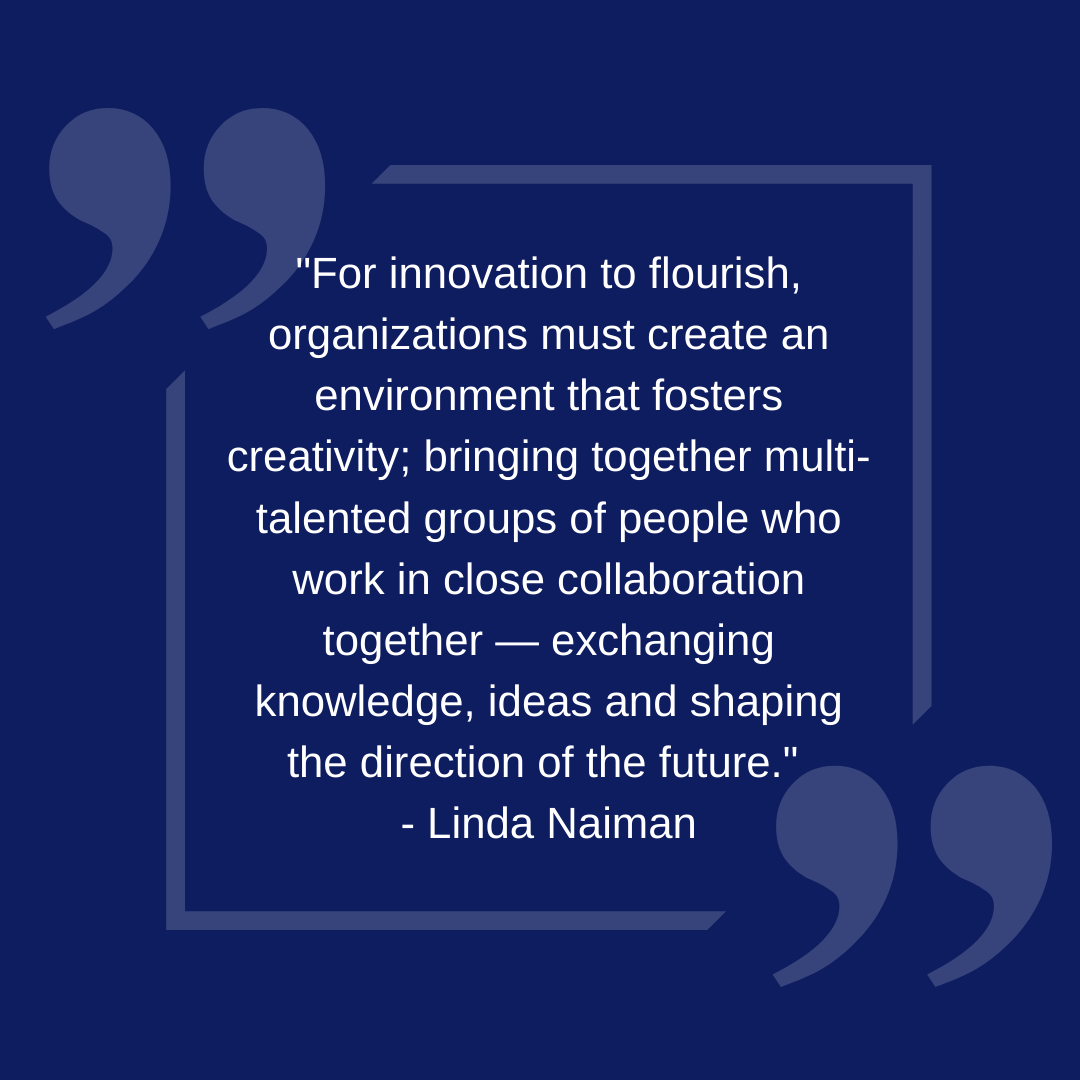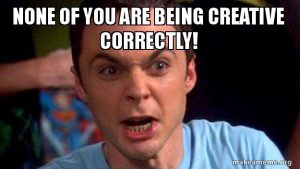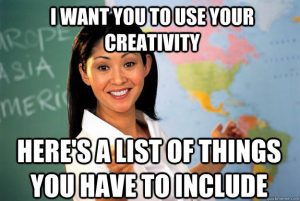
Today’s Buzz is by Jenny Kosek
Communications Strategist, City of West Allis, WIS
What I’m Reading: Early Stephen King
What I’m Watching: Everything on Huluween
What I’m Listening To: Rasputina, How We Quit the Forest
As we barrel towards 2021, most public sector organizations are carrying heavy burdens from 2020. Soaring emergency expenses compounded by devastating revenue losses are making planning for the future more difficult than ever before. Turnover, furloughs, hiring challenges, and the shift to remote work are leaving teams strained. Political unrest, the fight for social justice, and the pandemic are causing burn-out and impacting employees’ mental health. With no end in sight to any of these challenges, we’re being called on more than ever to devise innovative ways to improve organizational operations and service delivery. Every organization is looking for novel ideas that will streamline processes and cut costs. Employees are challenged to imagine new ways to reduce expenditures while continuing to offer high-level service to residents. Innovation is essential and the need is urgent as we continue to struggle in this unimaginable new normal.
 Yet here’s how calls for innovation typically go: leadership asks team members to come up with new ideas. Team members wrack their brains for the assigned period of time and come up with…very little. A few ideas might come in, but the golden ticket leadership was expecting fails to surface. Leadership gets frustrated. Employees get frustrated. Work continues as usual. Processes remain stagnant. The cycle continues the next time a problem arises and a solution is needed.
Yet here’s how calls for innovation typically go: leadership asks team members to come up with new ideas. Team members wrack their brains for the assigned period of time and come up with…very little. A few ideas might come in, but the golden ticket leadership was expecting fails to surface. Leadership gets frustrated. Employees get frustrated. Work continues as usual. Processes remain stagnant. The cycle continues the next time a problem arises and a solution is needed.
In this scenario, the desired outcome was doomed from the start. Innovation doesn’t happen on command, and innovation won’t happen unless many other cultural competencies are being practiced within an organization. Chief amongst these is creativity, because here’s the reality: innovation is impossible without creativity. Government doesn’t have an innovation problem; it has a creativity problem.
I was warned when interviewing for the public sector that government was not known for being a creative industry. Too often, creativity is stifled in government by bureaucracy, hierarchies, and old ways of doing things. We demand outcomes but don’t allow time for processes. We bury good ideas in day-to-day work or squelch them with fear of failure. If we’re not known for being a creative industry, it’s by our own hand, and it’s no coincidence that government isn’t known for being very innovative, either. One depends on the other: creativity generates ideas, and innovation puts ideas into action. While the tide may be turning, we still have a long way to go to connect the two and actively cultivate them in our industry.
It’s vital that we prioritize creativity in government now to face the mounting challenges coming our way. Ultimately, creativity is an essential but undervalued professional skill that our organizations need to survive and that we must nurture in our people. In a study conducted by IBM of 1,500 CEOs, it was determined that creativity is the number one factor for future business success, more important than discipline, integrity, and vision. Yet only 29% of workers strongly agree that they’re expected to be creative at work.
Private sector has been quicker to embrace the importance of creativity in the workplace, perhaps most famously at Google, whose 20% Program is now a legendary example of what can happen when an organization prioritizes creativity and puts its priorities into action. This program gives Google’s developers permission to spend 20% of their work hours on a creative project of their own design. Not all employees use this benefit; some don’t at all, some spend 5% or 10%. But the option to go off the rails and pursue something different is there. Employees who did take the option created such blockbuster Google products as Gmail, AdSense, and Google News, so we know that granting permission for creation does indeed produce innovation. So how can we generate Google-level ideas within the public sector?
First, adopt the Google 20% mindset of allowing employees time to create. Employees need to know that they can take time for creativity, or it’s not going to happen. They need permission, and need to see leaders demonstrate, that it’s culturally acceptable to devote time to new projects and developing new ideas. No one comes up with a genius idea while buried in their day-to-day (think about your last good idea – how many of us have had the lightbulb go off in the shower, while driving, or walking our dogs? It never comes while you’re in the thick of your work). This is hard for us, because our organizations are publicly accountable for demonstrative productivity, and “creative time” doesn’t look very productive on paper. You may have to attach some measurables to this expectation, like number of ideas generated per hours spent, but ultimately, the gift of time is the single biggest factor in ensuring employees can bring forward new ways of operating. Adjust priorities and practice smart delegation to give employees time to focus on research, idea generation, and documenting proposed new concepts. If all 40 hours a week are only spent on day-to-day to work, there’s no room left for anything new to be created.
 Next, autonomy is essential to creativity and the innovation that follows. Micromanaging, providing too many parameters, squelching new ideas with “Yeah, but…” before the idea can be developed – all of these behaviors tell employees that fresh thinking isn’t welcome. Managers who truly desire creative behavior and seek innovation will give their teams freedom to explore, develop, experiment, and report, without interference in the project the team is pursuing. Managers may need to assist with resources or may be consulted for guidance, but under no circumstances should a leader who wants innovation intervene to provide specific direction or take ownership away from employees pursuing something new – in other words, don’t kill creativity, or you’ll kill innovation. If employees can’t run with their ideas, they’ll stop generating them entirely.
Next, autonomy is essential to creativity and the innovation that follows. Micromanaging, providing too many parameters, squelching new ideas with “Yeah, but…” before the idea can be developed – all of these behaviors tell employees that fresh thinking isn’t welcome. Managers who truly desire creative behavior and seek innovation will give their teams freedom to explore, develop, experiment, and report, without interference in the project the team is pursuing. Managers may need to assist with resources or may be consulted for guidance, but under no circumstances should a leader who wants innovation intervene to provide specific direction or take ownership away from employees pursuing something new – in other words, don’t kill creativity, or you’ll kill innovation. If employees can’t run with their ideas, they’ll stop generating them entirely.
Third, creativity has to be constant and opportunities to express it readily available. Install a white board for employees to jot down ideas as they come, with no judgement or expectations. For remote teams, start a shared idea document or leverage chat to allow employees to lay down ideas with no judgement, just exploration. Follow up with a casual in-person meeting or Zoom call once a month to discuss what ideas might be worth pursuing. Better yet, sit back and let employees run that meeting or Zoom call without you and let them report back. With managers out of the room or off of the Zoom, employees will be more comfortable coming up with something new. Rather than command employees to come up with ideas when the going gets tough, develop an atmosphere where ideas are constantly flowing, addressed, and put into action within your team.
Last, overlooked but essential, is providing surroundings conducive to creativity. There’s a reason notoriously creative companies have extremely well-planned workplaces that shatter notions of what a professional environment should be (office slide, anyone?). Government buildings are often drab and uninspired, and budgets for renovations hard to come by. If your facility is stuck in the 1960s and remodeling isn’t in the near future, get your team outside or off-site for brainstorming activities. For great effect but less expense, allow staff with private offices the freedom to choose paint colors that inspire them, or let teams pick colors for their shared spaces. If your workspace is currently remote, think of ways to make the virtual surroundings more creative. That might mean opening your meetings with a puzzle or brain teaser to get your team’s thinking going in a new direction. If our environments are stale, our thinking is stale. Whether brick and mortar or digital, regularly refresh work environments to energize minds.
As we move forward out of this dark year, the only certainty we have is that more challenges lie ahead. If we expect new ideas, we need to start with new expectations for our teams. If we all agree the old way of doing business is now a thing of the past, then old expectations, management styles, and operations need to go, too. Creativity can’t be forced and innovation doesn’t just happen. The two go hand in hand and can only occur in environments that tirelessly and consciously support them both.
